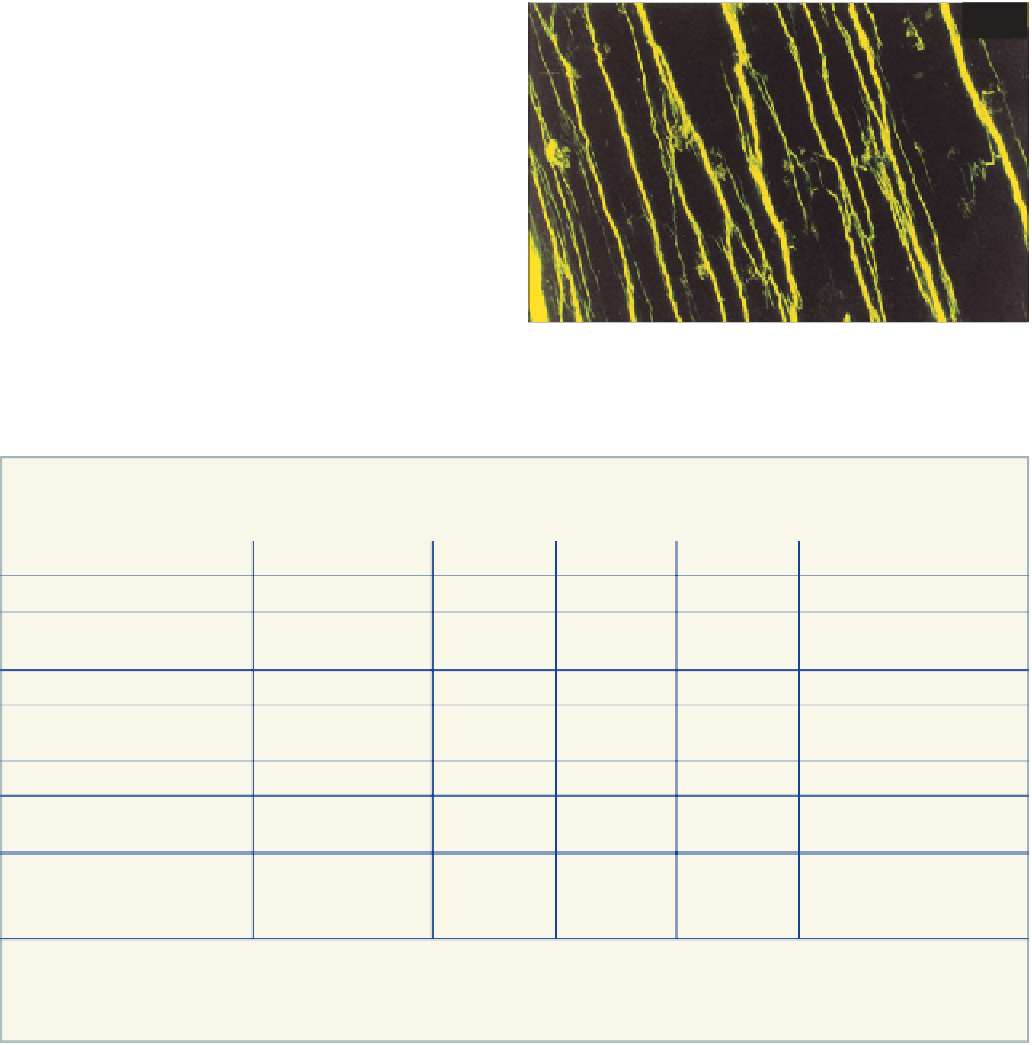Geoscience Reference
In-Depth Information
Once the roofing material has been established as being
slate it should conform to the following physical and
chemical test criteria in accordance with EN 12326-1:
• Individual slate thickness not less than 2 mm.
• Variation of thickness of individual slates shall not
be greater than ±35% of the nominal thickness.
• Packed thickness of 100 slates shall not deviate by
more than ±15% of the nominal thickness.
• The batch of slates shall have consistent length,
width, edge straightness, rectangularity, and flatness
in accordance with the requirements of the standard.
• Water absorption of )0.6%. Alternatively >0.6% but
must pass a freeze-thaw resistance test.
• Pass thermal cycling test without exhibiting
exfoliation, splitting, or other major structural
changes.
• Noncarbonate carbon content of )2%.
standard are not very demanding and a pass does not
necessarily guarantee the highest quality of slate. In
practice the pass range includes a variety of different
slate qualities and the standard gives no detailed
guidance on quality classification, or any way of
predicting the potential service life of roofing slate. To
aid roofing slate quality classification, Hunt (2005) has
proposed a scheme, which uses the results of the EN
12326-2 tests to give an indication of possible roofing
slate service life (
Table 12
).
121
Bending strength, thermal cycling, and sulfur dioxide
exposure test results provide classifications that are used
to calculate the minimum thickness that the slates must be
to perform satisfactorily on a roof. Petrographic exami-
nation can be applied to failed test specimens to investigate
the causes, extent, and significance of failure during
thermal cycling and sulfur dioxide exposure tests (
121
).
The pass/fail criteria to the EN 12326-1 roofing slate
121
Delaminations (green) in a slate specimen from a
sulfur dioxide exposure test, highlighted using
fluorescent microscopy; UV, ×35.
Table 12
Classification of roofing slate quality from results of EN 12326-2 tests (after Hunt, 2005)
Criteria
Class A
Class B
Class C
Class D
Class E*
Flexural strength (MPa)
*
70
*
60
*
50
No limit
No limit
Characteristic modulus
*
55
*
45
*
35
No limit
No limit
of rupture (MPa)
Water absorption (%)
)
0.3
)
0.4
)
0.5
)
0.6
)
0.6
Potential for
No
No
No
Yes
No
pyrite oxidation
Carbonate content (%)
)
3, preferably
)
1
)
3
)
5
)
1
No limit
Conform to EN
Yes
Yes
Yes
Yes
Yes
12326-1
Expected service
>75 years
40-75
20-40
Up to
Up to 20 years, likely
life (trouble free)
years
years
20 years
to exhibit variable
colour change sooner
*
Class E applies to 'roofing carbonate slates' as defined by EN 12326-1 ('rock used for roofing and external cladding, containing
phyllosilicates and a minimum carbonate content of 20% and exhibiting a prominent slaty cleavage').




